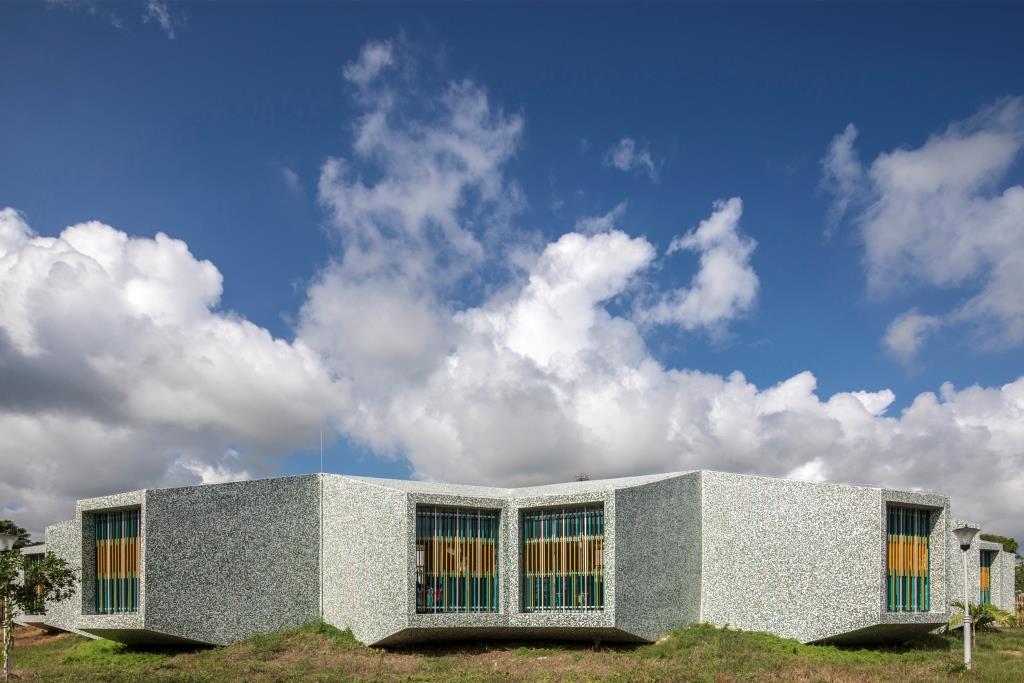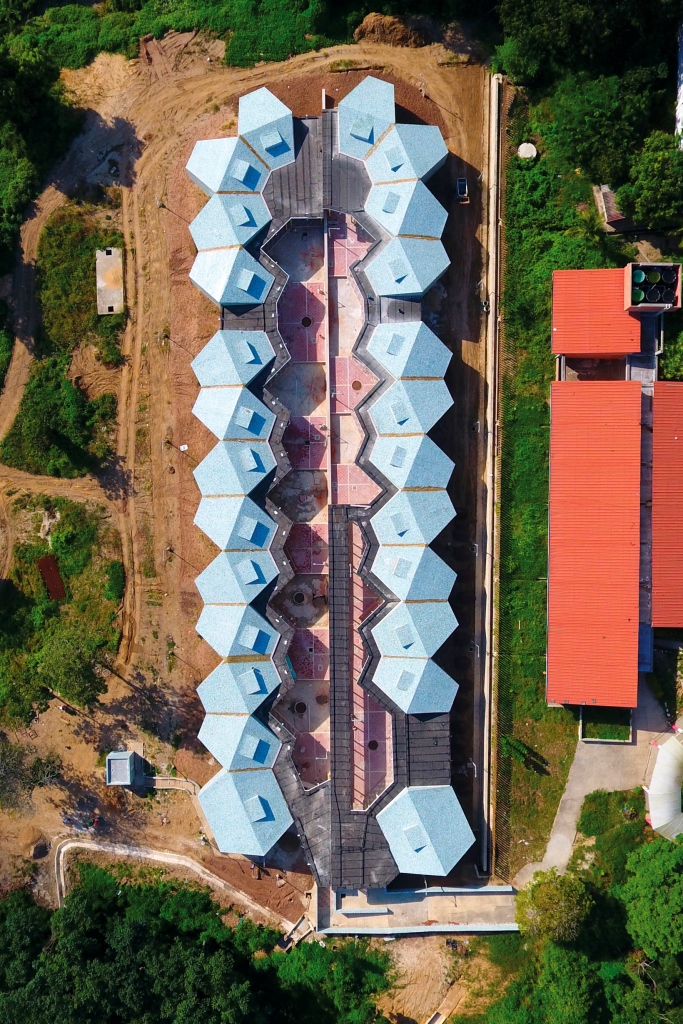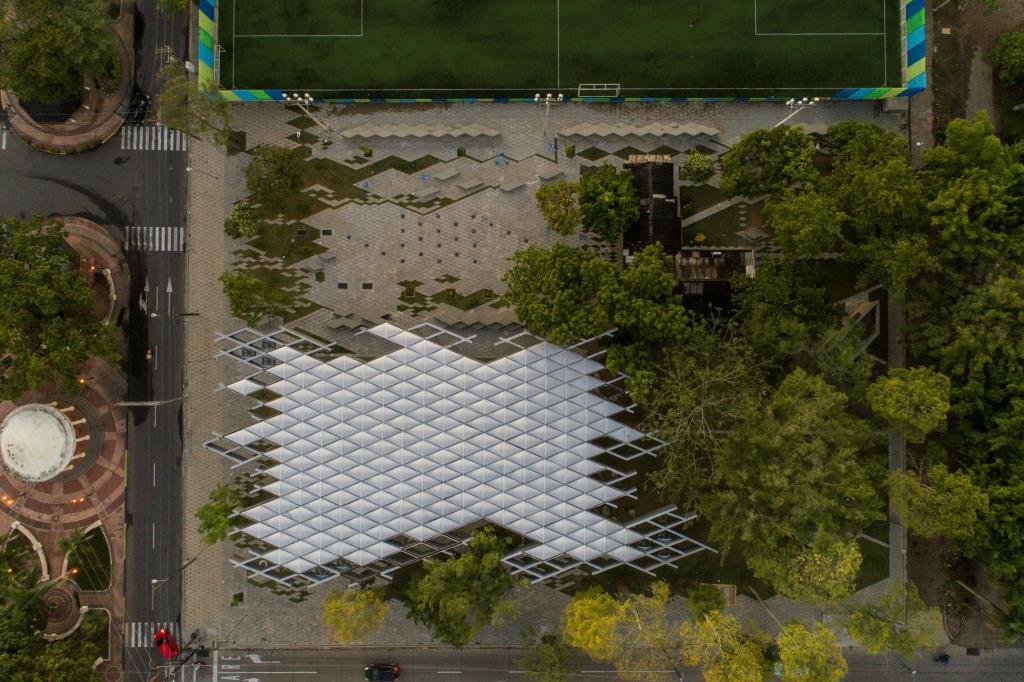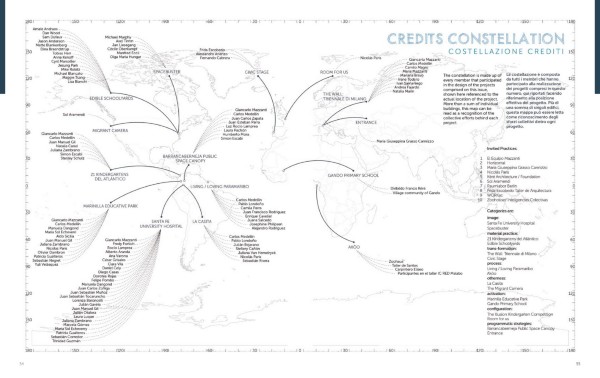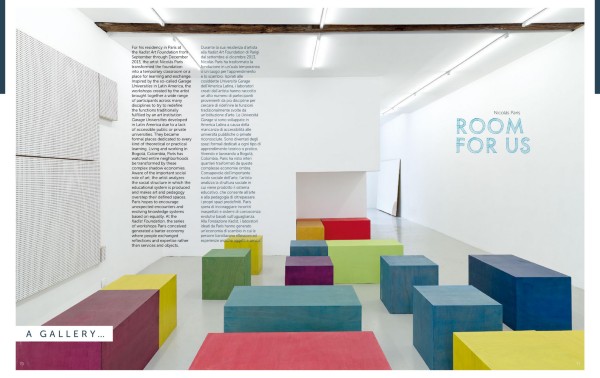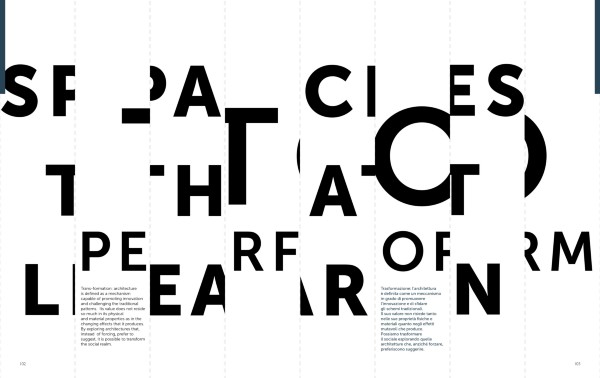GIANCARLO MAZZANTI EL EQUIPO MAZZANTI + HORIZONTAL
Spazi Che Imparano A... IQD 52

BIOGRAPHY
Born in 1963 in Barranquilla, Colombia, he graduated in 1987 in Architecture at the Javeriana University of Bogotà and obtained in 1991 the Master in Industrial Design, History and Theory of Architecture at the University of Florence. He has been Visiting Professor at world-renowned universities including Harvard, Columbia and Princeton. He founded in Bogotá the architectural firm El Equipo Mazzanti. He is the first Colombian architect whose works are included in the permanent collection of the MoMA and of the Centre Pompidou. Attentive to the social content of his projects, he considers architecture as a means to promote the creation of communities through the development of meaningful and iconic works, where people can feel represented. His works show that good architecture can give new identities to cities and their inhabitants. Among his most famous projects there are the Biblioteca in Medellin, the Medellin Sports Coliseum, the great public canopy of the Forest of Hope in Bogotá and the Pies Descalzos school in Cartagena de Indias. The particular interest in social issues led him to found Horizontal, a foundation created to develop architectural and urban planning projects whose aim is to foster the pursuit of security, equality, education, environmental adaptation and social capital development. Winner of numerous awards, he received in 2006 the award in the category “Urban Design and Landscape” at the X Biennial of Architecture Biennale in Venice, in 2010 the “Global Award for Sustainable Architecture”, in 2016 the “American Architecture Prize” for the Marinilla Educational Park and in 2017 for the expansion of the Santa Fé de Bogotá Foundation.
Spaces That Learn To…
The issue of IQD partly curated by architecture firm El Equipo Mazzanti with Fondazione Horizontal, seeks new ideas to reflect and produce sustainable and diversified spaces, where the public infrastructure plays a fundamental role as a meeting place of inclusive citizen participation. We are convinced that the impact capacity of architecture is not based on itself, as an object, but on what it can attract in terms of human behavior and socio-cultural relationships; and it is from there that the opportunity arises to have our projects and ideas dialogue and to create new perspectives on the use of space. Focusing on this idea, we understand space beyond its abstract condition, we consider it from a broader perspective, that implies its construction by multiple actors, human and non-human, connected to one another in specific moments and places. This edition of IQD aims to bring together a series of projects from all over the world, which, starting from the above perspective, have had an impact on the architectural sphere and on the contexts in which they have been built. What these projects have in common is that their value does not reside exclusively in their design, but in what they are able to generate. The disciplinary discussion and exploration are the basis of the architect’s professional practice. The development of material and technical conditions enables us to operate in such a way that the discussions on the architectural object stems from architecture itself. Nevertheless we always question ourselves about the status quo of the practice and guide our design processes starting from the risk and the continuous search for new action fields. We always work starting from questions such as: After the object and its materiality what other conditions could be helpful in what we design and build? What is the performative condition of architecture? How can we foster new relationships or behaviors? What is the future of architecture? How can we induce actions, events and relationships that transform space? How can architecture learn to be? The concept of this edition aims at challenging the notion of these questions, and from there, the idea of architectural function as a static meaning of usefulness, that derives from the modernist architectural vision. We aim at reconsidering the concept of spatial effectiveness to the benefit of productivity and understanding how the existence of other forms can support the relationships and the possible redefinition of the usefulness of a building. Looking at architecture as at one of the practices that can have a great influence on the transformation of life and on the material construction of the world means to understand how, generally, architecture is also an element that is defined through the control structures, where the user plays the role of leading actor; an element that cannot be confined to conceiving spaces, relationships and circulations designed to be as effective as possible. Generally the effects produced by such a vision are hardly covered by architecture magazines, therefore I think that this edition represents a great opportunity to lay emphasis on those firms that move away from this notion and reconsider the relationships that architecture can generate in conditions such as: the total absence of a program, the wandering, the bewilderment, the playing, the anomalies and the playfulness, all concepts related to the idea of the user as an active co-author. In this sense the projects featured in the section Spaces that learn to… are all structures that generate living conditions focused on human relationships and that become spaces that learn to: play, educate, embrace, dialogue, participate, perform, grow and be recognized… In short, to be an event.
SPACES THAT LEARN TO… BE AN EVENT
